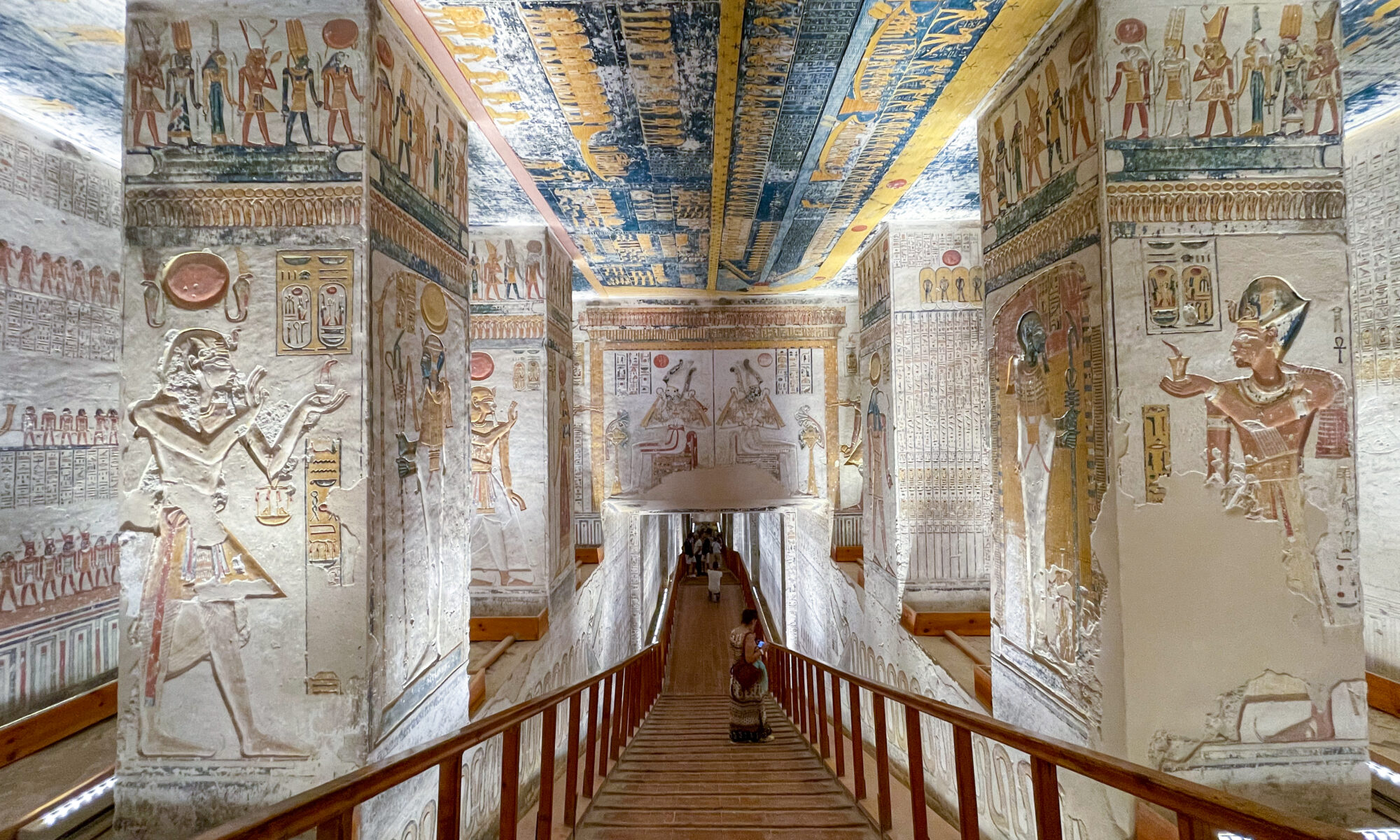The Valley of the Kings on the west bank of Luxor is one of the top destinations in Egypt – for good reason. It may be hot and crowded, but it has some of the most amazing scenes inside its tombs.
We traveled to the Valley of the Kings and Queens as part of our day trip to the west bank of Luxor where we also visited Queen Hatshepsut’s mortuary temple. On any given day, your ticket at the Valley of the Kings allows you to enter three tombs (of five available that day). You can also buy additional tickets for the premium tombs beyond the five – of which we entered the Tutankhamun’s tomb and the tomb of Ramses V and VI. We were able to enter a fourth tomb of the standard five due to delays from a film crew in the tomb of Ramses V and VI.
Ramses IX (KV6)
The first tomb we entered was the tomb of Ramses IX. It was by far the busiest tomb, likely due to it being the tomb closest to the entrance. As you can see from the video below, the hallway is covered in hieroglyphics and religious imagery. The colors you see are actually original. Actually, all the colors you see at the Valley of the Kings and Queens are original and absolutely remarkable. To think that these carvings were completed over 3000 years ago and are still vibrant today!
Ramses III (KV11)
The second tomb we viewed was the tomb of Ramses III. I was not able to record a video in this tomb because you are only allowed to use your camera in three tombs total (but not at all in Tutankhamun’s tomb). One interesting aspect of this tomb is that there is a bend in the hallway, where most tomb’s simply go straight down, with maybe some side rooms. Like Ramses IX, this tomb was intricately decorated with stunning ceilings (which you never get used to, seriously always look up).
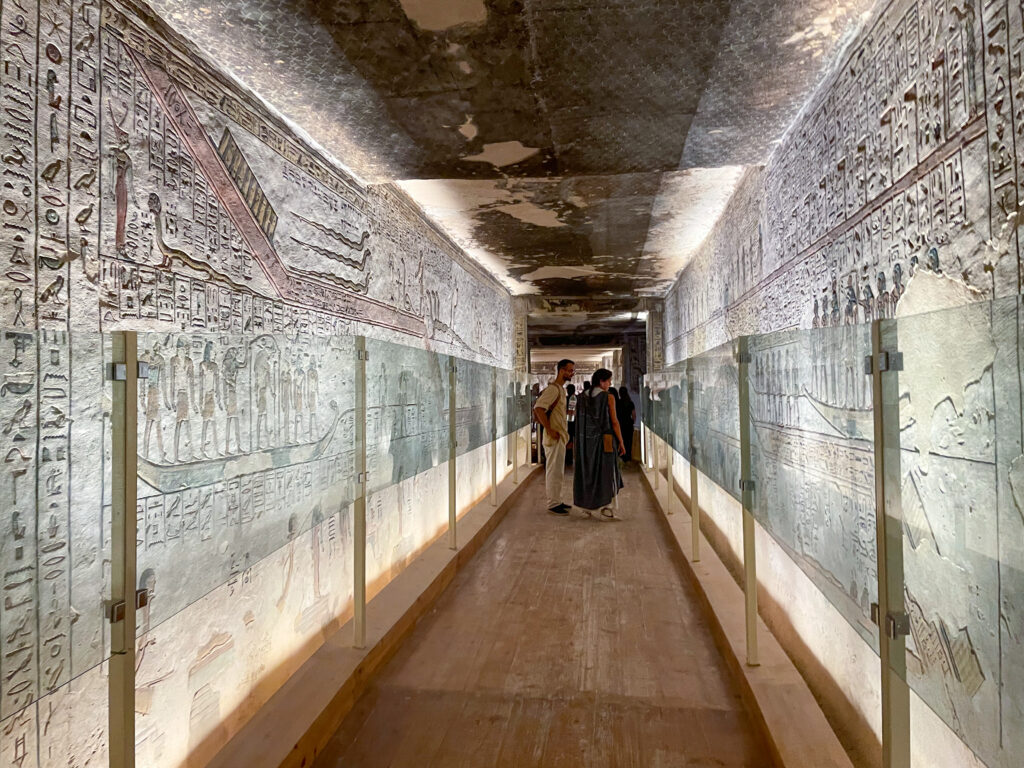
Ramses I (KV16)
The tomb of Ramses I is a very small tomb but the walls have exceptional colors. Unfortunately, when we went, it was very crowded, with people just standing around, and nobody wearing masks (we went during Covid). This made us feel very claustrophobic and had to leave, but before we left I tried to get a quick video of the burial chamber.
Tutankhamun (KV62)
The most famous tomb, and probably the most famous archeological find in history, the tomb of Tutankhamun, was our first “for-pay” tomb. None of the fabled treasures remain except King Tut’s mummy and stone sarcophagus. The colors and images inside are extremely well preserved, but the tomb itself is very small with not too much to see. We felt the entrance fee of about ten US dollars was well worth (I mean, how can you go to the Valley of the Kings and NOT go into King Tut’s tomb), but apparently our thinking was not common there. The “for-pay” tombs are significantly less crowded for this reason, and actually we were the only ones in King Tut’s tomb, which was awesome.
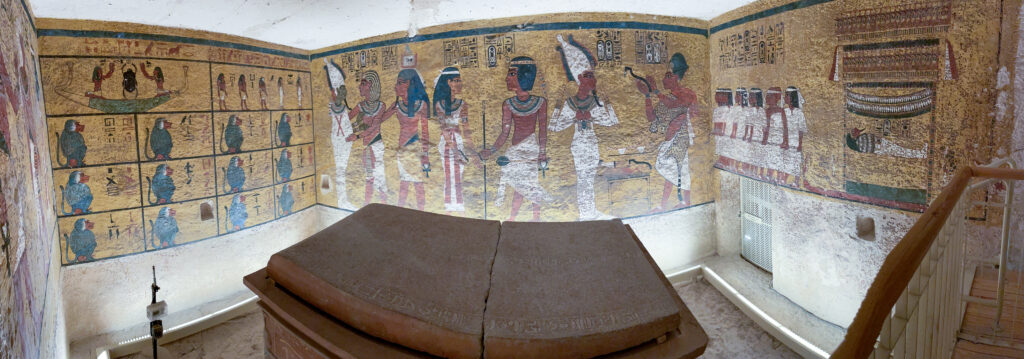
Merenptah (KV8)
The tomb of Merenptah is the largest in the Valley of the Kings. We would not have typically been allowed to enter this tomb because we had already went in three regular tombs, but because we had to wait for a film crew to leave the tomb we wanted to enter, they let us go in for free. Because of its length, there is a lot to see, especially the very large sarcophagus in the burial chamber at the bottom of the tomb.
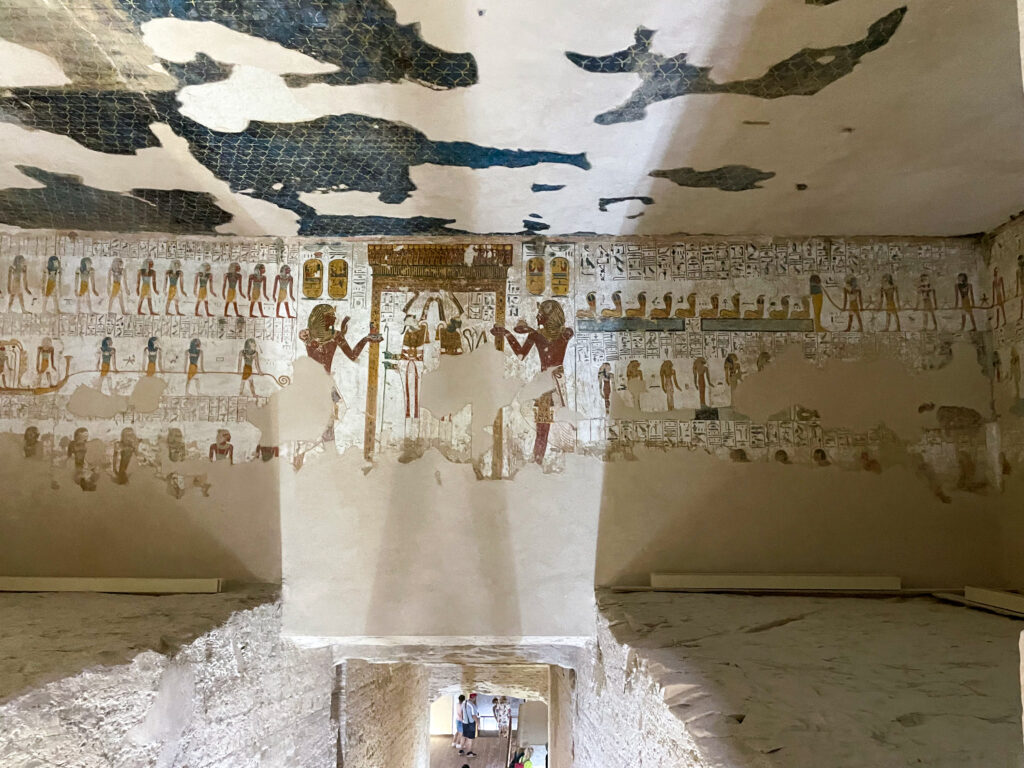
Ramses V and VI (KV9)
When we went to the Valley of the Kings, our guide highly recommended that we go to the tomb of Ramses V and VI. This was another “for-pay” tomb like King Tut’s, which meant it would be less crowded, but it was only about $6 to enter – and I have to say probably the best $6 I have ever spent. This was easily the best tomb we saw at the Valley of the Kings. The colors were so vibrant that some of the images looked fresh. It is truly hard to describe the feeling of walking through this tomb as literally everywhere you looked was something truly amazing. Then you get to the burial chamber – where the ceiling is breathtaking.
Valley of the Queens
After we left the Valley of the Kings (and a short rest later) we made the short trip over to the Valley of the Queens. Because this site isn’t nearly as famous the the Valley of the Kings, there was almost nobody else there. We had every tomb to ourselves, except for short periods of time when a group would quickly pass through (and I do mean quickly, which I will never understand how people can simply speed walk through these sites).
The tombs were much more modest than the Valley of the Kings, but remarkably well preserved. The colors and imagery also felt softer and allowed for an interesting contrast to the tombs we had saw earlier in the day.
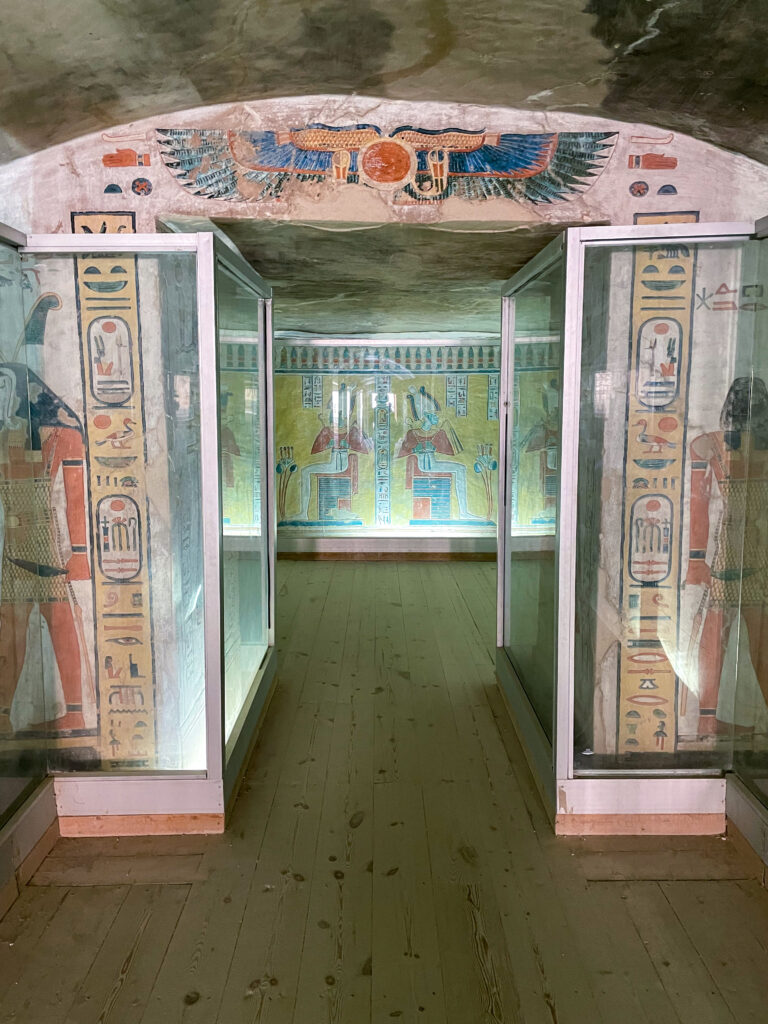
Nefertari (QV66)
The most expensive tomb we entered was the tomb of Nefertari, the wife of Ramses II. This tomb was truly special and dramatically different than the others. The colors were vibrant with a bright white background. One thing that likely does not show well in pictures is that instead of the images and hieroglyphics being chiseled into the rock, they were all puffed out. This gave a softer feel to the tomb and added a lot of depth. This tomb was easily a highlight of the entire trip to Egypt.
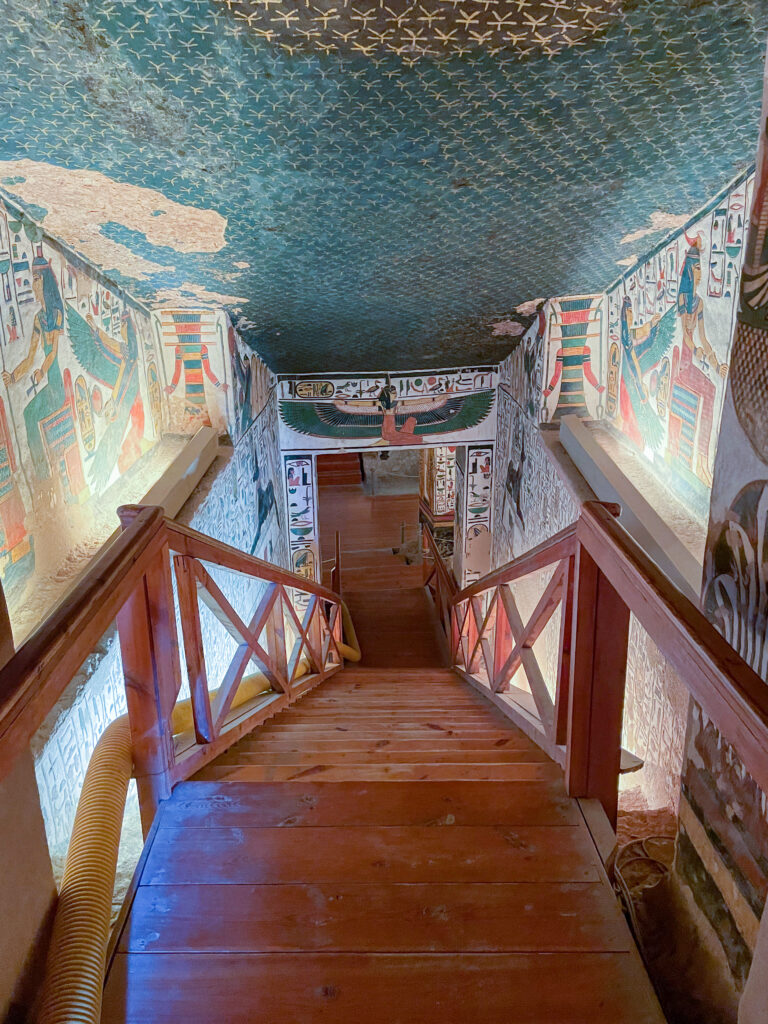
This was the first time that you felt like you had a glimpse of what all of these tombs must have really looked like when first built. I wish I was allowed to have brought my camera into the tomb to take better video, but I was only able to get the video from my phone (and I had to “tip” the guard to even be allowed that).

